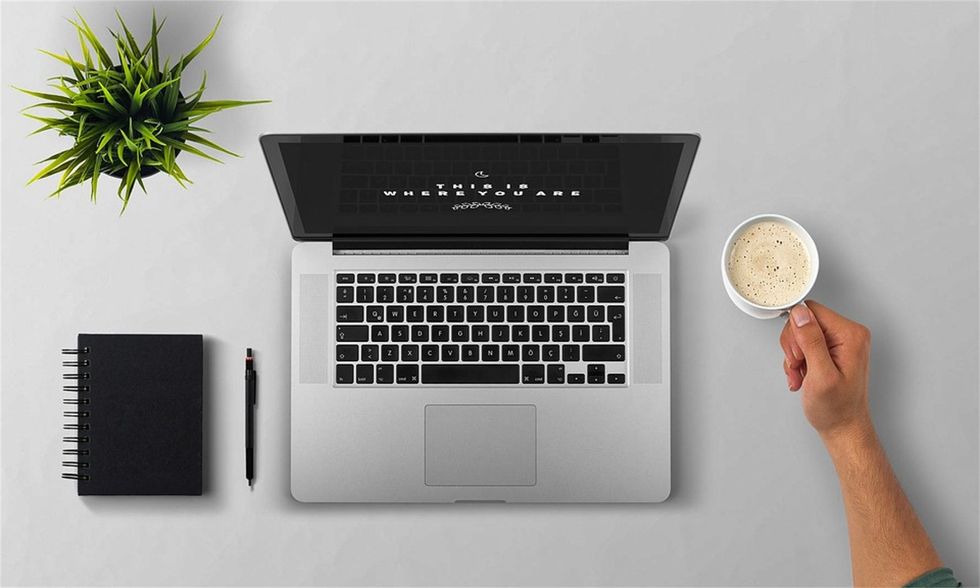For most of us, having access to different kinds of technology has become more of an expectation than scientific marvel. We use it nonstop to keep track of friends and world news without really giving a second thought to its business and entertainment values. However, digital clutter can build up in no time if we ignore it. Before the chaos can turn into a hassle, take the time to regain a little control over your digital world.
1. Unsubscribe.
If you’re like me, you probably subscribe to any and every site for the best deals and offers. After all, we’re in the digital age and like to be kept up-to-date about our favorite stores and services. New information about everything from ticket prices to seasonal sales can be at our fingertips with just a click. However, what happens when you begin to outgrow those subscriptions and your inbox includes twenty new coupons each day that you will never be able to use in one month, let alone this weekend? There comes a time when this technological convenience becomes nothing more than a daily reminder of what you might be missing.
To give yourself a little relief, click the unsubscribe button then don’t look back. Sure, keep a couple subscriptions that you use almost weekly, but prepare to be brutal. If you subscribed to a site or service for future reference months ago, it’s time to accept the reality. You might return to it later when you have the interest or resources, but for now unsubscribe and don’t look back.
2. Delete. Repeat.
Just like all those ancient subscriptions, get rid of old emails you’ve been holding onto for weeks or maybe even years. While there is likely prized information or just entertaining communication in the messages you haven’t already deleted, they probably aren’t worth the storage space. If you haven’t looked back at them since the day they were written, reconsider their value. Also, those forwarded and chain emails can almost definitely go into the trash bin. They might be good for a few laughs at first, but make space for the next set.
Overall, be ruthless. Whether it is a nostalgic email or picture, think about what else could be in its place. Go through each one and decide how much it’s worth. When you feel anxious just from opening your email account and seeing numbers in the triple digits, it’s time to simplify your online life. Similarly, if you’re keeping each picture you’ve ever taken at any event or special occasion, you might need to look at them more critically. Delete the blurry and keep the best to leave room for future memories.
3. Create, separate and organize files.
For everything you can’t just delete and forget about, think about better places to store them than just your email and desktop. Get creative and make distinct locations for every kind of text or visual. For instance, take your email account’s labels beyond just the spam and drafts. Store all the receipts, recipes and everything in between in their own separate files for easy access and a cleaner inbox. The only way to truly manage an online account or profile now is to divide and conquer. As for any photos, you can organize them by so much more than just the dates and even make folders within more general ones.
In addition to organizing the basics, consider different places to store your backup photos and files. Once again you can minimize like a pro with just a little thought and time. A few flash drives for separate projects, for example, combine convenience with efficiency. Even consider using online writing and storage sites instead so that your desktop can stay less cluttered and you have your files wherever there is internet access.
4. Reevaluate the apps.
For smartphone users, especially, digital clutter doesn’t just extend to our computers. Our phones are basically tiny computers, after all, so they come with similar maintenance. Keeping various accounts organized will avoid most of the extra hassle, but the various icons and applications pose their own threat to technology-induced stress. At least half the ones that come already installed should be useful, but the rest you can probably delete without a second thought.
With so many free or inexpensive applications available with just a quick download, it’s tempting to install everything even partially interesting. However, apps take up more storage space than their small icons might indicate. Keep the apps that you use every day, such as the ones for social media and frequent communication. Yet, rethink and narrow down some of the gaming and coupon apps you might have downloaded on the spur of the moment, especially if they send daily notifications. You might be surprised by how little you miss them and how much new memory is suddenly available for more personalized applications.

















